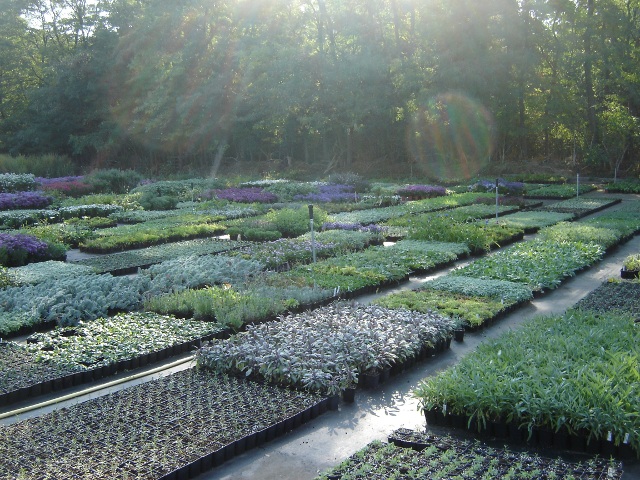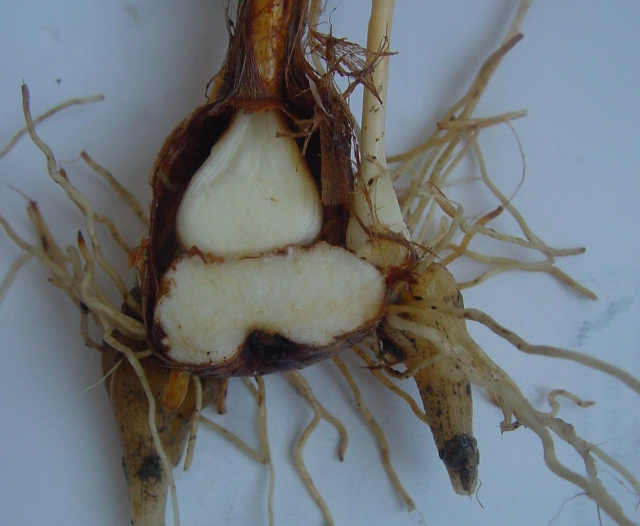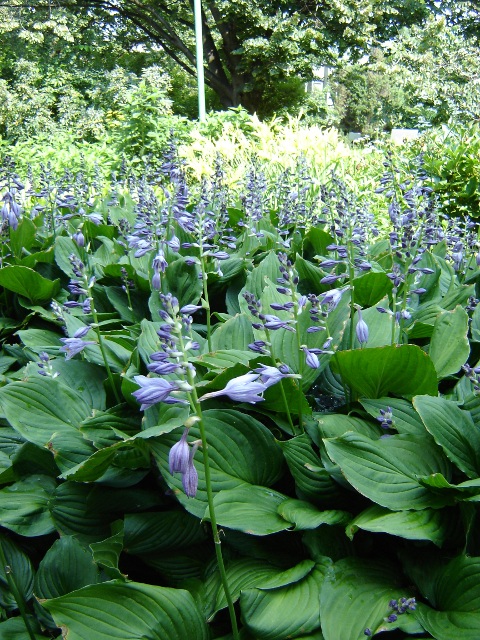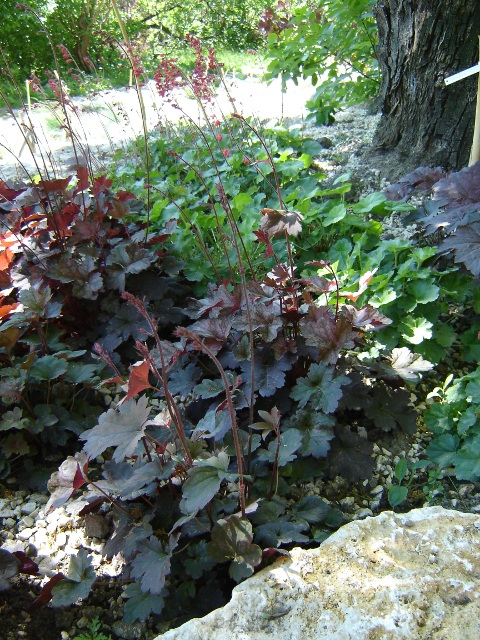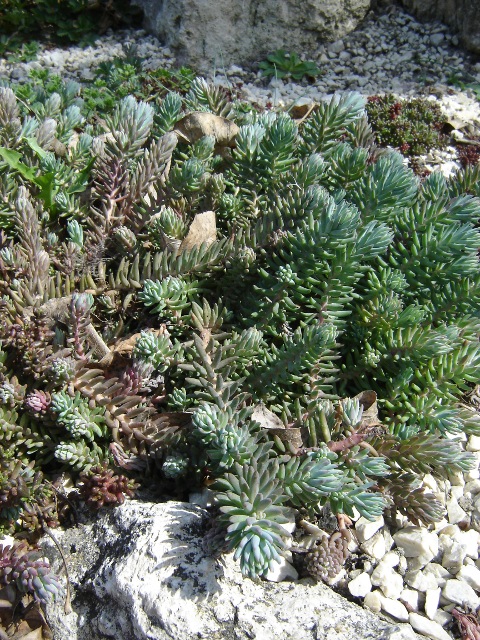9. Modern system in cultivation, trade and application of perennials
Authors: Ildikó Kohut – Márk Steiner
9.1. Definition of perennials
Botanically every plant, which lives more than two years, is called perennial. The definition of perennials varies from it significantly in ornamental horticultural approach: they are those plants, which can survive the unfavourable periods of local climate (winter frost, drought, etc.), and live for many years.
Perennials are present in the gardens for thousands of years, but the major impact was affected on their usage by the past 100 years. William Robinson (1838-1935) applied first the natural and wild perennials; Getrude Jekyll (1843-1932) took notice the height and impression of plants is perennial border beds[1]. Tallest plants should be set to the backside of the bed then smaller and smaller ones follow each other to the edge of the bed.
At the moment, it is typical in each countries of the word that the volume of perennials increased also in trade and production. In USA Hemerocallis, Hosta and Iris species are the most famous and widespread perennials, collectors and growers are incorporated by societies (e.g. American Hemerocallis Society).
9.2. Characteristics of the Hungarian perennial cultivation
During Turkish rule perennials appeared in farm gardens. They originated mostly from own propagation. In the 19th century mainly German-Austrian effect was felt in the application of perennials. In that time, they were found principally in aristocratic gardens.
Prominent breeders: Gyula Magyar (1884-1945); János Domokos (1904-1978) – landscape plants; László Farkas; György Lászay.
The application and growing of perennials shrank to 1960s then it changes for the better from the year 1989. Crops were squeezed out gradually from the gardens by ornamental plants. Delivery services appeared (e.g. Starkl, Sieberz), which increased demand further.
Exact data are not available about the volume of perennial cultivation, but the data of growers show, that the production was below 400 thousand stools in 1988, it increased to 6-7 million stools in 2004, and in 2011 it reached 14-17 million. Economic crisis has impact on this sector as well: on produced and sold quantity.
In Hungary, there are three main grower-trader forms in perennial production: perennial section in garden centre, specialized perennial nurseries and smaller familiar perennial nurseries. A significant part of customers are landscapers, individuals often may not buy directly from grower. Profi Partner, located next to Budapest in Szigetszentmiklós, operates exclusively as a wholesale. Growers market themselves their plants here with labels, on rented places.
For retail sale and general public flowering plants may be marketed solely, while flowers are not essential for landscapers.
Perennial rock garden plants are the most popular, there is a great demand also for mid prise perennials, and in public parks larger plants are planted as well. In future years, further increasing is probable – especially after the relief of economic crisis. The surface of green roofs may rise in Hungary as well, graveyard culture and perennial application in public places may develop moreover the presence of ornamental grasses may become significant in flower beds.
Currently, the largest perennial businesses in Hungary are Hegede Kertészet (Helvécia; www.hegede.hu); Zsohár Kertészet (Nagyrákos; www.zsohar.hu) and Mocsáry Kertészet (Budaörs;www.mocsaryevelo.hu). Furthermore, Flora Nostra (Budapest; www.floranostra.hu), Beretvás Kertészet (Szigetújfalu; www.beretvas.hu), Berger Trió (www.bergertrio.hu) and Szigeti és Társa Kertészet ( www.szigetikert.hu) are also notably.
An improvement may be observed in quality of sale and plant material. In the curse of seasonal sale largest volume may be sold in spring till mid-July.
In Germany, Austria and Switzerland there is a working group in 17 regions, which examines many groups of variety in different soil and climatic conditions for several years. Coordination centre is in Weihenstephan.
Perennials in containers
9.2. Opportunities of perennial propagation
Propagation tools:
- propagation tray
- propagation flat
- pot
- medium:
- free from weeds, pests and diseases
- adequate pH (ideal for grown plant)
- good structure
- good wettability
- good nutrient supply
- it may be bought or self-mixed (if the latter, soil mixer is needed – see in previous chapter)
Most perennials are produced in pots of 9×9 or 11×11 cm, medium-sized ones are grown in containers of 1.5 l, and big-sized in 2 or 3-5 l containers.
9.2.1. Generative propagation
For seed sowing it needs polytunnel, possibly bottom heating or cold storage room in perennial growing, too.
9.2.1.1. Seed sowing
Those perennials are propagated by seed, where this is the easiest way of it. Spontaneous hybridisation – for example like in Aubrieta species – is not allowed, because steady plant material can not be produced.
There are several options for “purchasing”: production may be started by collected or bought seeds. It is important to buy from good source. It is forbidden to collect seeds of protected plants, as well as to collect propagation material of any plants from nature reserves.
Size of seeds is very diverse; it changes from a grain of dust (e.g. Astilbe) to the size of a bean. During the storage germination capacity may reduce.
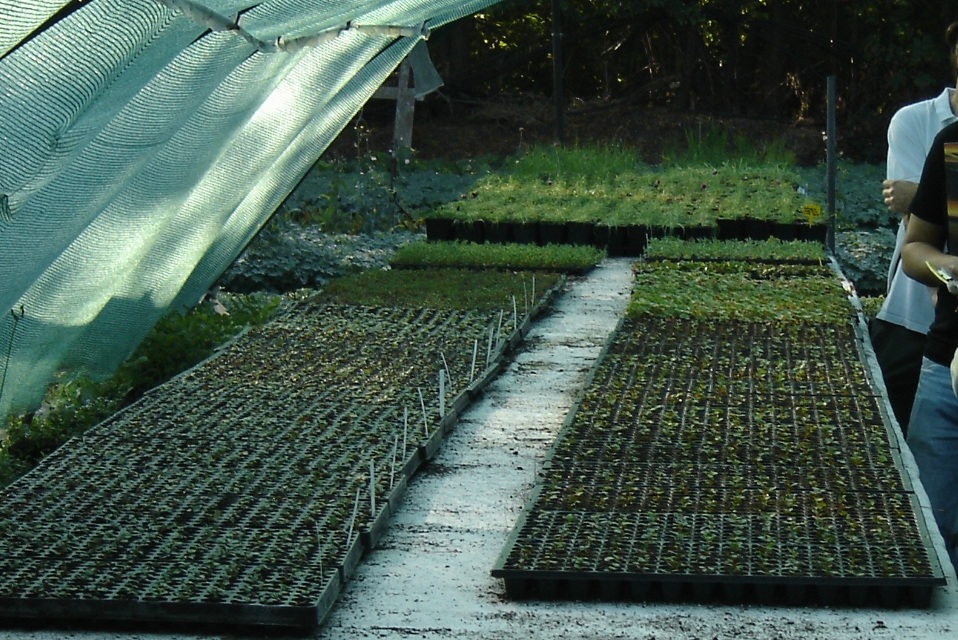
Perennial seddlings
Way and date of sowing have to be geared to demands of the plant.
- it has to be sowed after ripening immediately: e.g. Ranunculus, Helleborus
- it needs frost effect before germination: e.g. Ranunculus
- it has to provide snow cover or vernalization for subalpine and alpine perennials
- seeds of aquatic plants have to be stored in refrigerator in water until sowing
Germination temperature is varying:
- 16-20 °C: e.g. Alyssum saxatile
- 22-30 °C: e.g. Delphinium, Scabiosa
Seeds germinate in darkness or light, so they should be germinated with or without cover (if latter, medium dries off quickly).
Date of sowing:
- early spring: e.g. Arabis, Aubrieta
- end of the summer, autumn: e.g. seeds of Asteraceae, Lamiaceae, Rosaceae families
Place of sowing:
- propagation flat
- cell tray
Growers propagate themselves from seed rarely (only those, which are cheap and need no special treatment or attention), rather they buy seedlings from specialised firms (e.g. Syngenta, Florensis).
9.2.1.2. Spore sowing
It is used in fern propagation. It needs careful attention and specialist knowledge. Actually, generative process takes place on gametophytes after sowing of spores; spore itself is a vegetative reproductive structure. Nonetheless, it reckoned in most cases among generative propagation methods due to the similar technical method to seed sowing.
9.2.2. Opportunities of vegetative propagation
In the case of vegetative propagation mother plants have to be maintained both for division and for cuttings. It is done mostly on a container yard. In pots varieties can be segregated well from each other, and it decreases the risk of variety confusion, but poted plants have to be watered regularly and transplanted several times.
In open ground mother plants have lower labour intensiveness, but they should make young in every 3-4 years as well.
After rooting plants are transplanted into 9 × 9 cm square pots. Owing to the good use of place it is the most economical pot size.
9.2.2.1. Division
It is used mostly in home garden. At least 1-2 well developed buds have to be left on divided pieces.
Generally it may be say, plants that blossoms in spring are separated in the late summer or in autumn, and in spring which blossoms in autumn.
In the case some species it has significance in bulk propagation, too (e.g. Kniphofia, Hemerocallis hybrids).
In the course of division soil is shaken off from mother plant by hand, weeds and destroyed parts of plant are removed. Plants, which are difficult to divide, can be disrupted by a twisting movement. If required, knife or spade may be used.
9.2.2.2. Cutting propagation
1. Stem cutting
It needs both theoretical knowledge and technical equipments. Shoots have to be in adequate developing stage. If they are too young, they collapse quickly, but if they are too old, they are not able to produce callus[2].
Plants, which have hollow stem (e.g. Dicentra), need particular attention. It is advisable to propagate them by cuttings at sprouting, because their stem is not hollow yet.
In principle, it may be done at any time, if there are suitable shoots for cutting on the plant, but in practice it is made in two dates:
a.) in spring (from late April to early June): plants, which bloom in late summer or in autumn: e.g. Aster, Phlox paniculata
b.) at the end of the summer: these perennials produce right shoots for cutting to the end of the summer: e.g. Iberis sempervirens
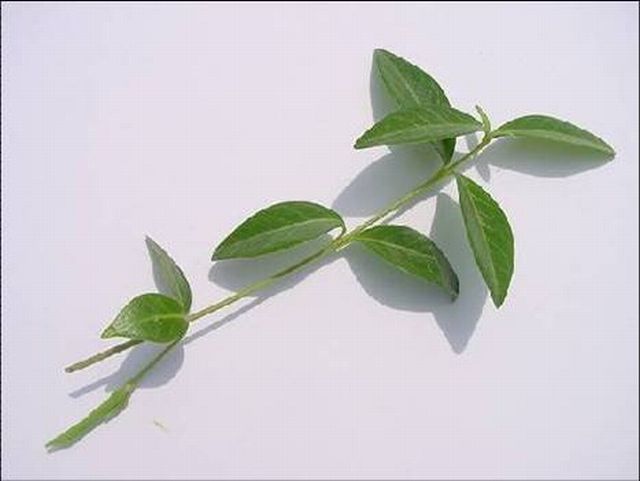
Unrooted cutting of Vinca minor
2. Root cutting
It has to take notice of polarity therefore cutting is cut slantwise at the bottom, while horizontally on the top. Anemone sylvestris and Anemone hupehensis may propagate so.
3. Cutting up of rhizome[3]
At least one leaf whorl has to be left on a piece of rhizome, because roots are formed on wound surface. Usually, it may be done in autumn and spring. It needs 1.5-2 months for rooting. E.g.: Bergenia cordifolia, Polygonatum odoratum
9.2.2.3.. Stolon[4]
Some plants (e.g. Coreopsis verticillata) do not produce viable seeds, but they develop stolons. If there are cut up into 5-6 cm pieces, the plant can be propagated so.
9.2.2.4. Bulb[5], corm[6], bulblet [7]
Bulbous plants have a noticeable group within perennials. Planting date depends on originate of the plant (Mediterranean or temperate zone).
Members of the former group (e.g. tulip, daffodil) are planted in autumn, while members of latter group (e.g. gladiolus, dahlia) are taken into the soil in spring.
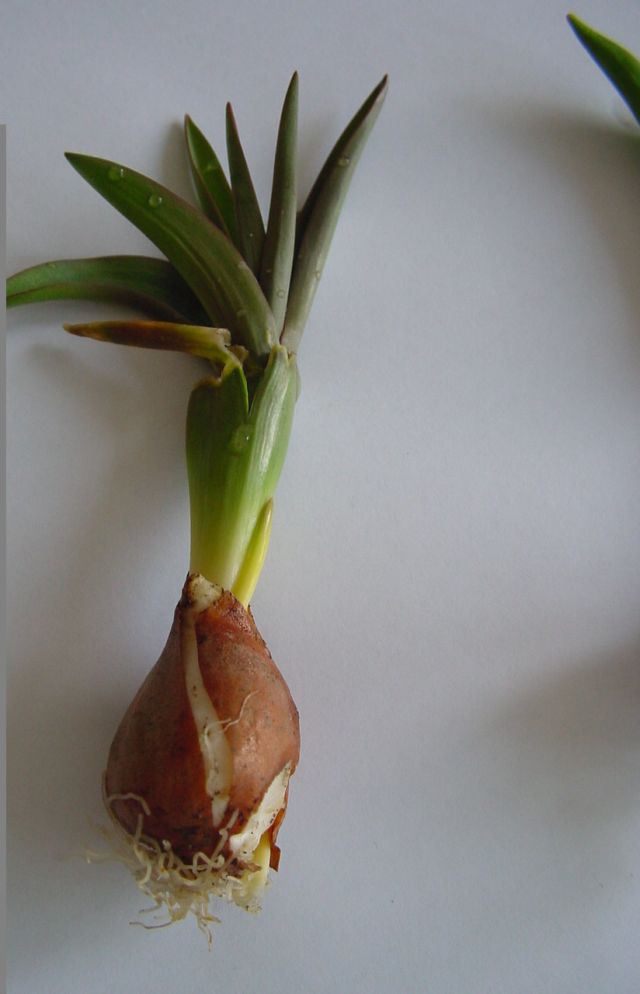
Bulb (left) and corm (right)
9.2.2.5. Micropropagation
This propagation technique is done in sterile conditions on culture medium. It is applied in daffodil, snowdrop, Hosta andHemerocallis species in Hungary. In another countries, more species and varieties are propagated so (e.g. members of Heuchera and Echinacea genera).
9.3. Plant life-forms of perennials
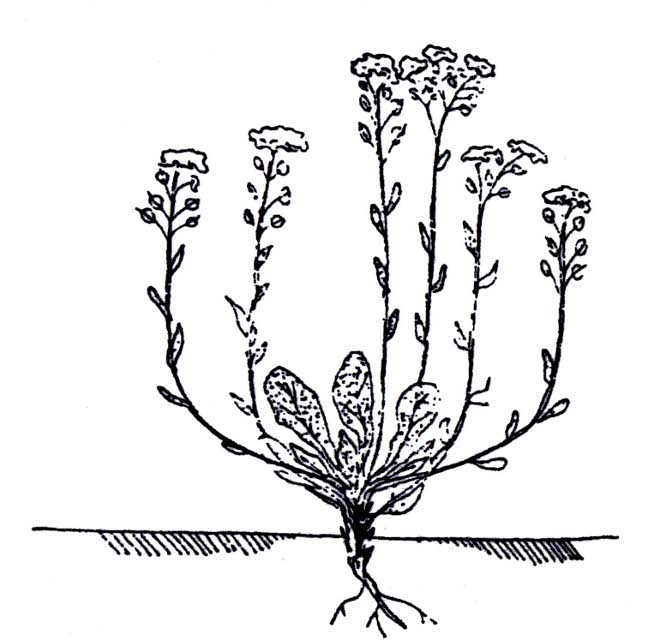
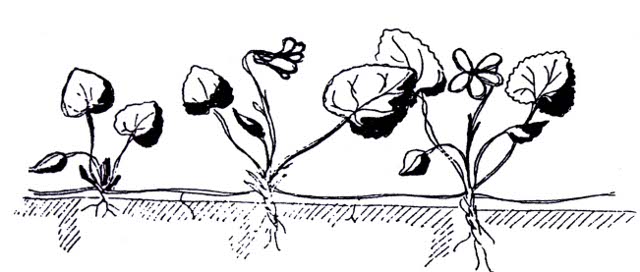
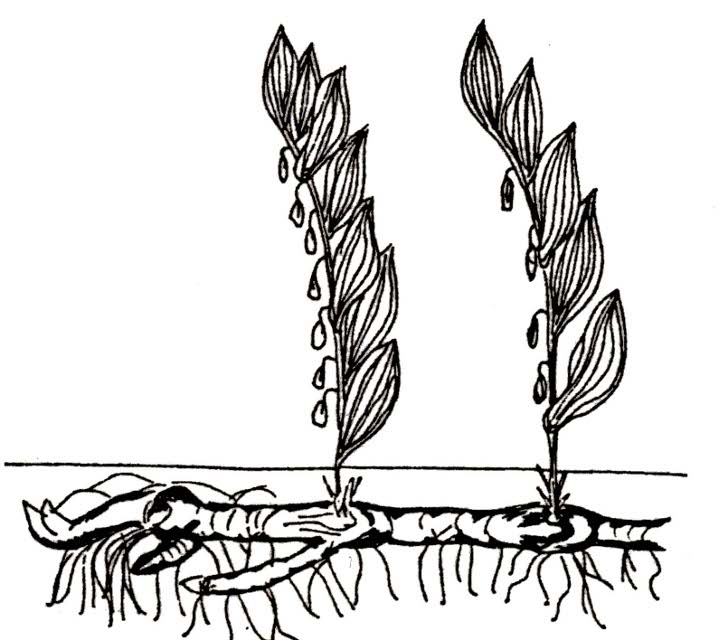
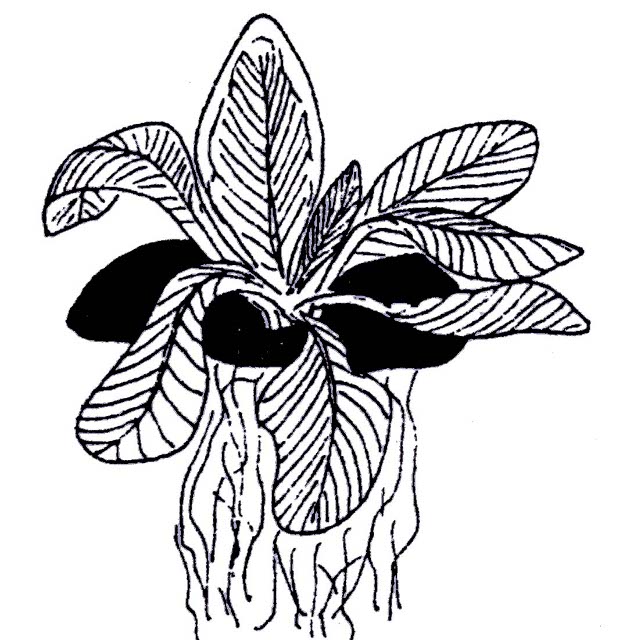
Plant life forms of perennials
From left to right: Chamaephyte, Hemikryptophyte, Geophyte, Hidatophyte
Definition of perennials is different both from the perspective of botanists and growers. Therefore, it is more subservient to sort this plant group according to types of life-forms.
1. Chamaephyte: their perennating buds are borne above soil surface
- dwarf shrubs e.g. Thymus vulgaris
- subshrubs e.g. Salvia officinalis
- succulents e.g. Sempervivum tectorum
2. Hemicryptophyte: perennating buds situated at or just below the soil surface
- perennating organ may be bud: e.g. Phlox and Aster species
- or rosette e.g. Primula
3. Cryptophyte: their perennating buds hide below ground
a.) Geophyte:
- bulb e.g. Tulipa species
- tuber e.g. Eranthis hyemalis
- corm e.g. Crocus vernus
- rhizome e.g. Iris germanica
b.) Hydro- and helophyte: aquatic and marsh plants. Their perennating buds recede below water surface and marshes, e.g. Nymphaea alba
9.4. Possible use of perennials
Application methods depend highly on origin and life-form of the plant. It is important to meet the ecological needs in every case. “Seven ecosystems were separated by German specialists according to resistant to drought and light requirement of the plants: forest, forest edge, open field, rock garden, waterside, water, perennial bed.”
9.4.1. Perennial bed
General features of suitable species:
- Height between 50 and 150 cm
- Equally sunshine and semi-shade tolerant
- Average water demand (mesophyte)
It should make a distinction between perennial beds of home garden and public place. Perennials have to satisfy some conditions in public place:
- adequate tolerance (e.g. against air pollution, winter-salting),
- tolerance against pests and diseases,
- low demand for manual labour,
- long life, lasting flowering,
- decorative value in flowerless condition as well,
- high adaptability is favourable.
Contrarily, decorative value comes to the front in home garden: more sensitive and shorter-lived plants may also be planted in perennial bed, plant protection is possible and dead plants may be changed periodically. Nevertheless, overcrowding should be avoided.
Plants may be divided into two groups: luxury varieties and wild species and varieties. In the first group the main aims of breeding are the size and colour effect of inflorescence; their vegetative body is mostly thin. The members of latter group have sturdy and modest appearance and less conspicuous flower.
Flowering peaks should be tried to make by the selection of species.
Suitable species for perennial beds:
|
|


Achillea filipendulina and Centaurea cyanus
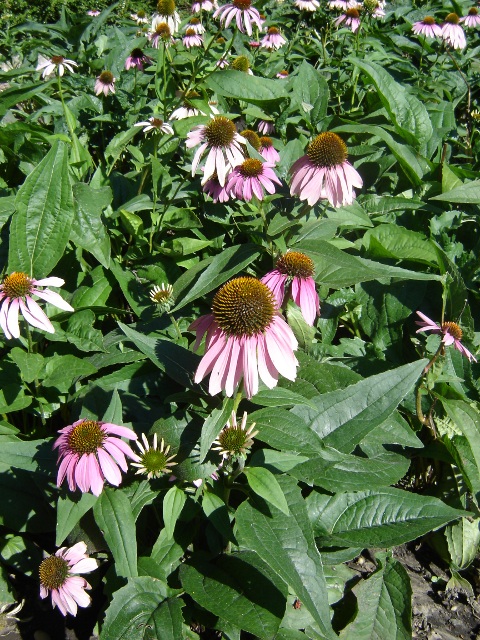
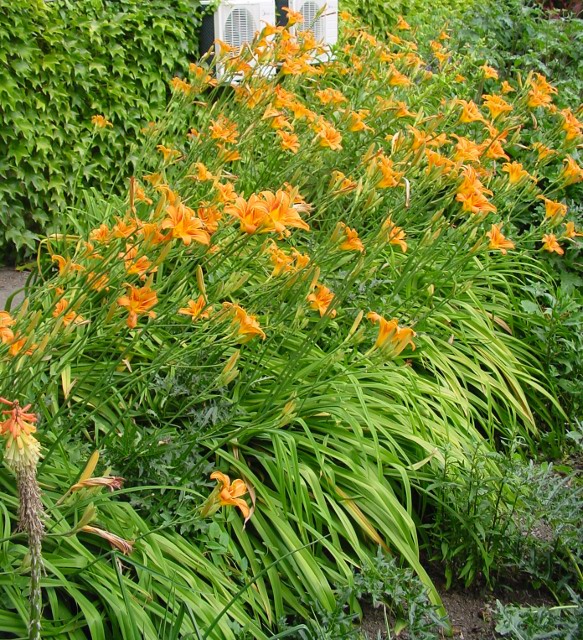
Echinacea purpurea and Hemerocallis fulva
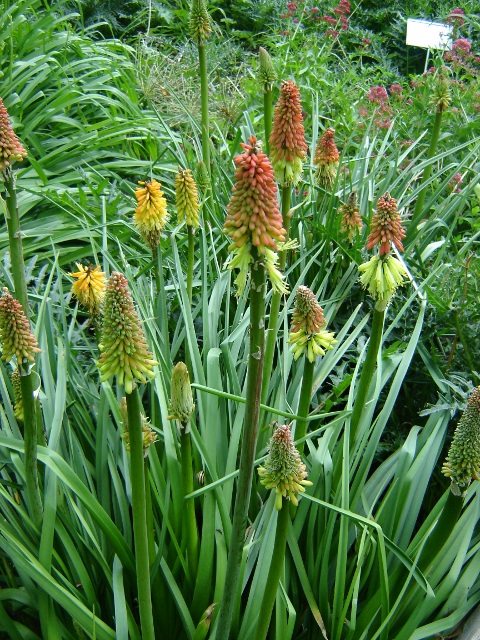
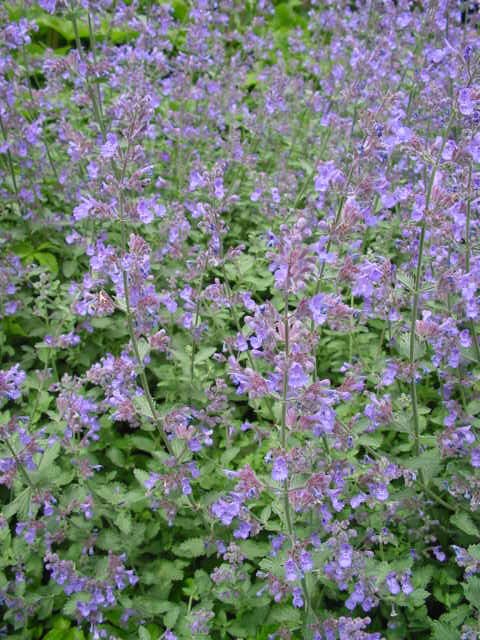
Kinphofia uvaria and Nepeta × faassenii
9.4.2. Perennial shade garden, groundcovers
- a part of these plants is true shade-loving: they need cool and humid environmental conditions,
- contrarily, shade-tolerant plants originate from cooler and more humid habitats, therefore they should be planted rather in semi-shade, they do not feel good in sunny place,
- the third group (geophyte plants of forest communities) does not require, simply tolerates the shade.
|
Shade groundcovers are planted, if establishment of turf
|
Shade perennials:
|
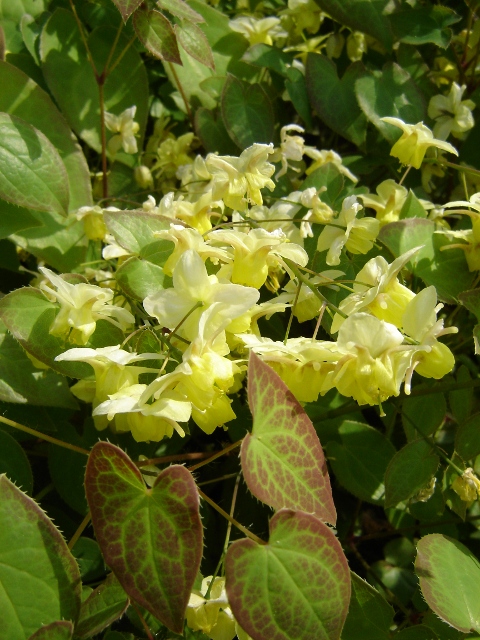
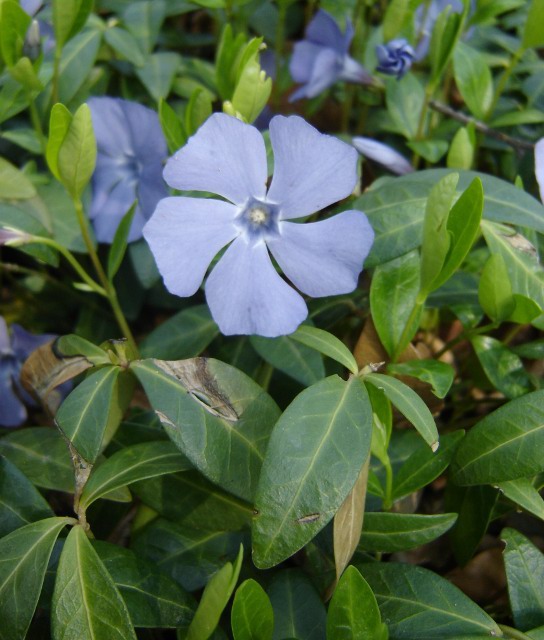
Epimedium alpinum and Vinca minor
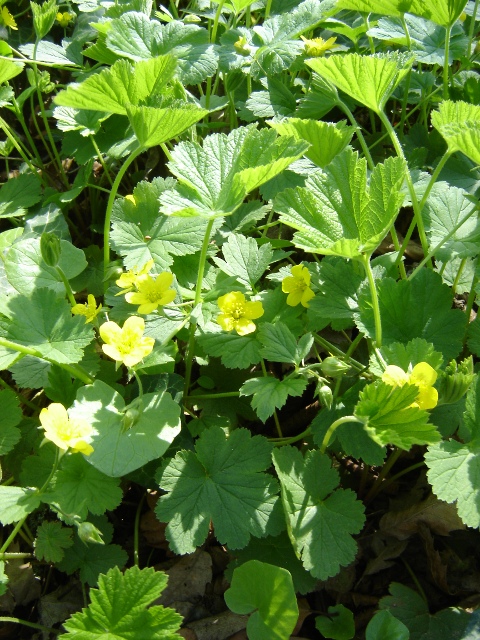
Waldsteinia geoides and Hosta ventricosa
Heuchera hyibrid
9.4.3. Species used as solitaires and boundaries, replacing shrubs with perennials
Some large perennials may use for space shaping, too. Their prime attributes are the followings:
- they are mainly dominant, robust perennials,
- size and vigorous growth of the plant is important,
- amazing leaf markings and leafage colour,
- in addition, the flowers, of curse,
- in original habitats they are the member of tall herb fringe communities, where soil is fat, water supply is abundant, and there is steady competition for light and air.
Applicable species:
- Arundo donax
- Cortaderia selloana
- Macleaya cordata
- Helianthus helianthoides
9.4.4. Rock garden
Rockery affords prominent aesthetic experience in the garden, although it is the most expensive part of it.
- it may be grouped architecturally:
- geometric rock garden: it connects intimately to the building, its elements are walls, steps, flagstone roads, etc.
- natural rock garden: an integral part of the garden
- llayered rock outcrop
- scattered stones
- its most important building component is the stone
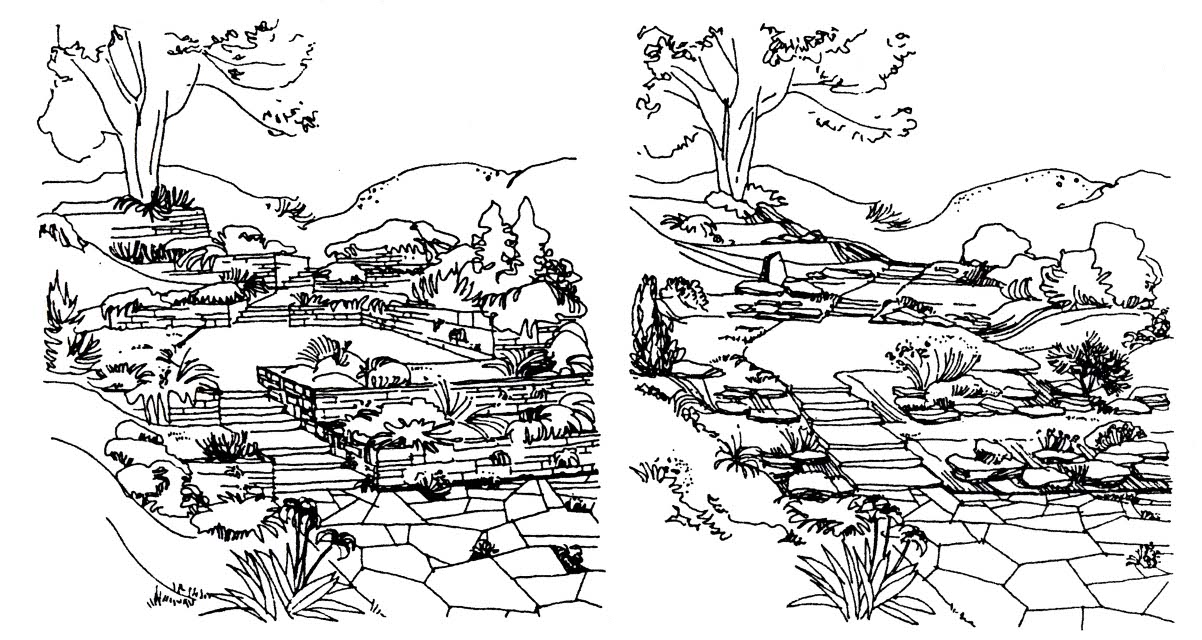
Geometric and natural rock garden
The utilizable plant material may be grouped according to more aspects. However, the most important role of rockeries is to have plants all year round, which ornate with their flowers or foliage.
- according to habitat:
- moderately demanding species, originates from lower mountain areas
- plants of dry deserts
- Mediterranean subshrubs
- according to growing habit:
- cushion plants
- tussock plants
- rosette plants
- runner plants
Rock garden perennials:
|
|
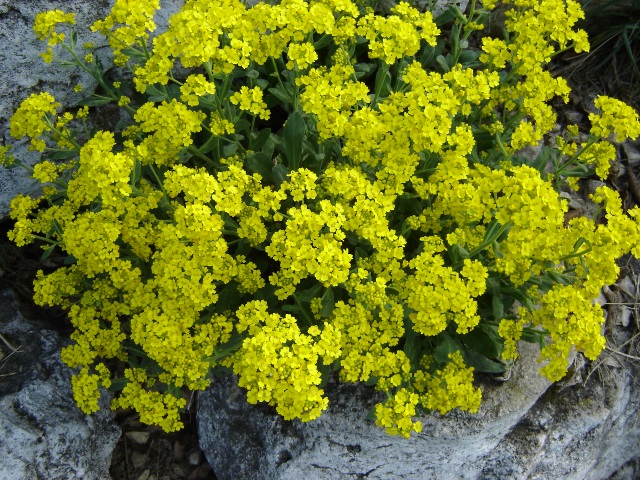
Alyssum saxatile
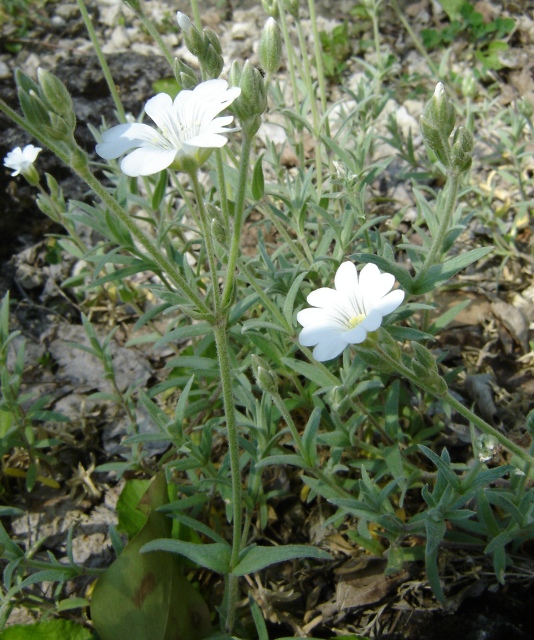
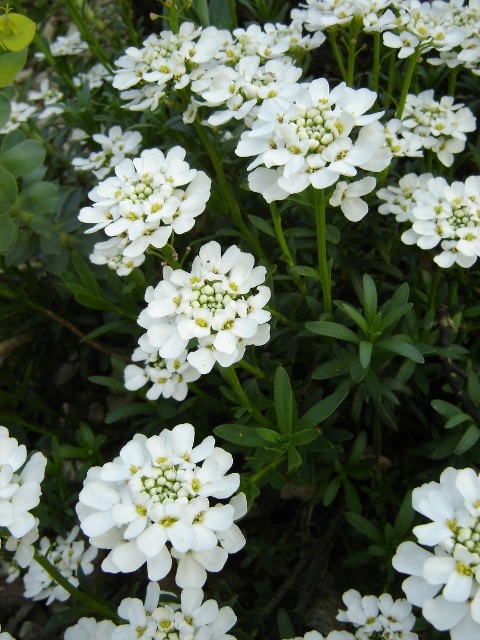
Cerastium tomentosum and Iberis sempervirens
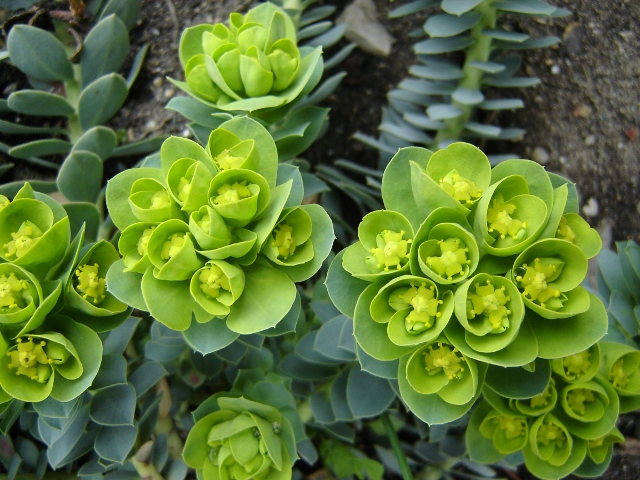
Euphorbia myrsinites
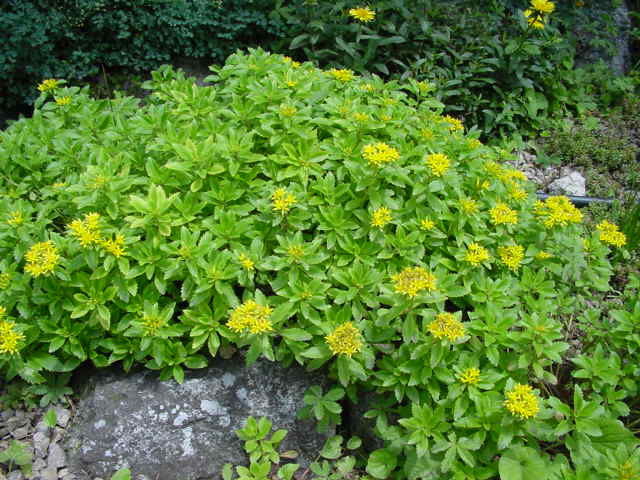
Sedum hybridum
Sedum reflexum
9.4.5. Perennial ornamental grasses
They represent a separate category within perennial ornamental plants. As it may be seen in this chapter, they may be used widely: in rockery, as boundaries, in flower beds, as dry flower, as waterside plants, in perennial beds and as solitaire planted into open lawn.
Major species:
- Arundo donax
- Cortaderia selloana
- Festuca pallens
- Leymus arenarius
- Miscanthus sinensis and varieties
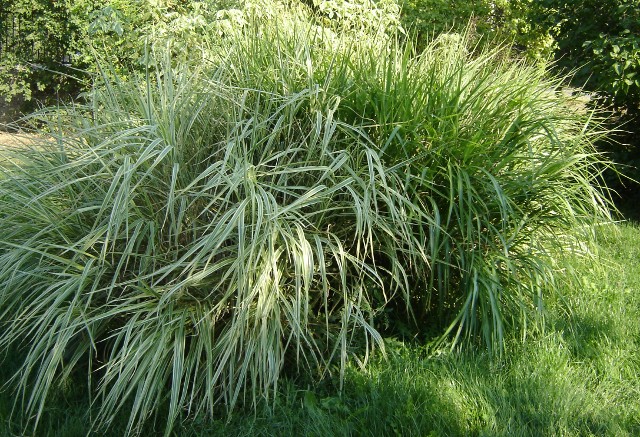
Miscanthus sinensis
9.4.6. Aquatic and waterside plants
In the course of application of aquatic and waterside plants zonation has to be taken into account, because their occurrence depends on water depth.
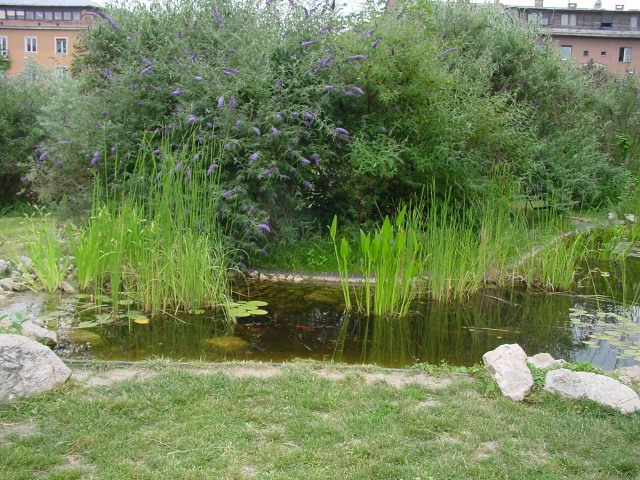
Water in the garden
|
Plants of deep water ( 60 cm or deeper):
|
Plants of 30- 40 cm water depth:
|
|
Plants of 20- 30 cm water depth:
|
Plants of moist water margin
|
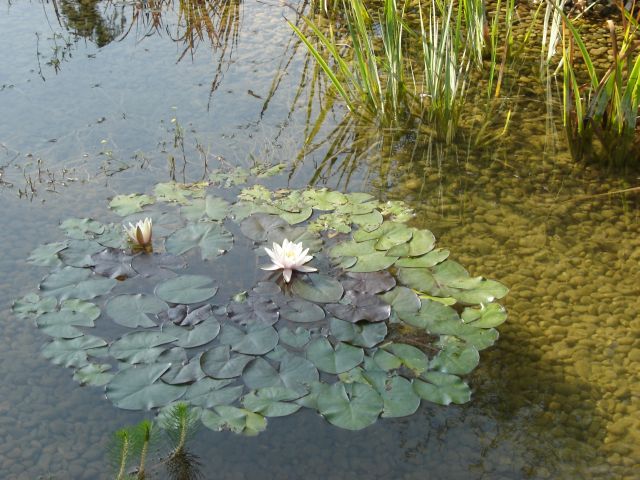
Nymphaea alba
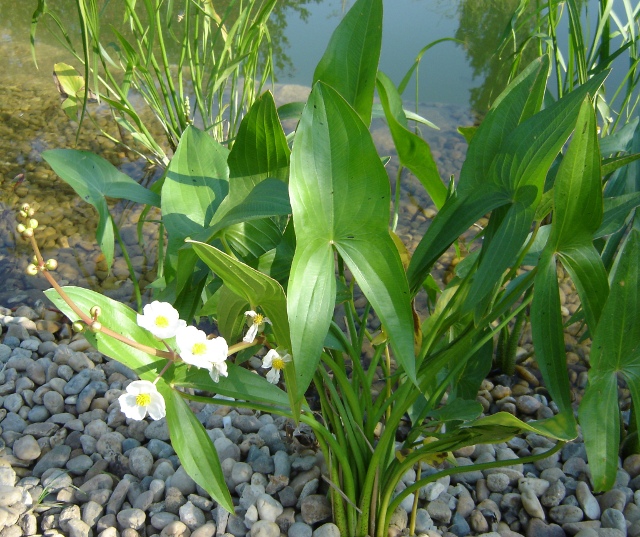
Sagittaria sagittifolia
9.4.7. Imitation of waterside with plants
Having regard to the fact that water is not present naturally in gardens (except in extremely rare cases), but in artificial ponds, where the soil of waterside is isolated completely from the water, really waterside plants, which need moist soils, may not be planted to this area. Instead of them plants are planted, which imitate waterside. Their common features are strong growing and drought tolerance. Many of them has rosette and looks like a sedge.
Species which may be used as waterside imitator:
- Hemerocallis fulva
- Kniphofia uvaria
- Tradescantia × andersoniana
- Saponaria officinalis
- Helianthus salicifolius
- Macleaya cordata
- Iris germanica
- Bergenia cordifolia, B. crassifolia
- Brunnera macrophylla
- Miscanthus species
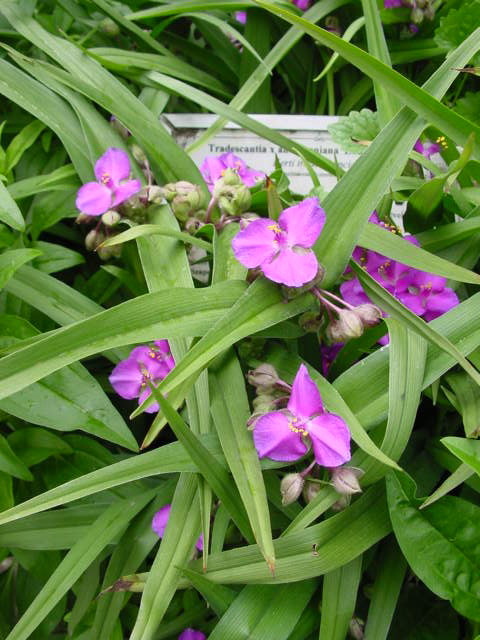
Tradescantia × andersoniana
9.4.8. Green roof
Green roof is a roof planted by plants, where the layers of roof insulation and the horticultural superstructure make up a coherent whole. Nowadays, it is very meaningful.
It may be grouped by several aspects: size, age, function, roof form. Horticultural specialists sort it mostly after the horticultural superstructure: on this basis extensive and intensive green roofs are differentiated.
ZEOSZ (Zöldtetőépítők Országos Szövetsége – Association of Hungarian Green Roof Builders) founded in 1999 is the professional organisation of green roof building in Hungary (http://zeosz.hu).
Extensive green roof : soil depth is at least 6-8 cm, it is relatively lightweight. It can be constructed not only on flat roof, but also on pitched roof (even 33 % slope). Thin soil layer (3-15 cm) is enough for root system of plants. They need no regular irrigation and fertilization. Appropriately selected vegetation ensures living mulch for long time.
Vegetation consist the mixture of succulents, some drought- and frost tolerant moss species and other perennials, which do not require regular maintenance, and they are able to adapt adequately to extreme conditions. The maintenance costs of these roofs are minimal.
Intensive green roof : depth of soil is 15-20 cm at least. It can be constructed only on flat roof or pitched roof with very slight slope. Whatever technical equipments may be established if it is required. Plants used on intensive green roof are smaller trees, shrubs and grasses. As usual, regular maintenance and fertilization is needed. These plants may be planted only on flat surface, because they require at least 30 cm thick substrate (or more), regular irrigation and fertilization.
9.4.9. Bulbous-tuberous-cormous perennials

Tulip, Daffodil
It is an important group within perennials. They may be used in several ways, as forced cut and pot flower, as decoration in parks, home gardens. Moreover they have significance also as balcony plants.
From among flower bulb producer countries of the world the Netherlands have lead role. United Kingdom, France, Chile should further be noted.
In Hungary, there are less data available on bulb production. In 1970s and 1980s, mainly tulip and gladiolus propagation material production was notably. Besides this, gladiolus and lily were produced as cut flower.
In early 1990s, the area of Hungarian flower bulb production reached 140 ha, its 38 % was tulip. Today, monitoring and data provision run into difficulties.
Etter Ltd. (http://www.etterkft.hu), Spalax Ltd. (http://www.spalax.hu) and Tulipa Ltd. (http://www.tulipakert.hu) are the major flower bulb distributors.
- Bulbous perennial: e.g.: Tulipa, Narcissus genera
- Cormous perennial: e.g.: Crocus, Freesia, Gladiolus
- Tuberous perennial: e.g.: Anemone species
9.4.10. Perennial species produced as cut flower and cut foliage
Nowadays, perennials and open-ground cultures have less significance as cut flowers, but – having regard to lower expenditures compared to protected cultures – the notability of growing is expected to increase in the future. The most important perennials which may be grown as cut flower:
- Asparagus officinalis var. pseudoscaber
- Leucanthemum maximum
- Dahlia hibridek
- Delphinium × cultorum hybrids
- Gypsophila paniculata
- Paeonia officinalis
- Paeonia lactiflora
9.4.11. Dry flowers
In the narrow sense, those part of herbaceous ornamental plants may be declared as dry flower, whom dried flowers and fruits retain their colour and form for longer time. More widely, everything is dry flower, which was dried or picked in the dry stage and used as flower arrangement material: flower, fruit, leaf, root, bark, moss and mushroom.
It may be grown or picked, and different preservation procedures may be done with them (drying, painting, dipping).
Magyar Szárazvirág Kft. (Hungarian Dry Flower Ltd., based in Lajosmizse) is the larges Hungarian distributor of dry flowers ( http://www.szarazvirag.hu).
Produced dry flowers:
- Achillea filipendulina
- Echinops ritro
- Gypsophyla paniculata
- Limonium tataricum
- Papaver orientale
- Physalis alkekengi
Literature
- Algeier W. (2012): Évelők a parkokban, Kertészet és Szőlészet, 2012 (27) 24-26.
- Csabai J. (2012): A Telekia speciosa (Shreb.) Baumg. védett faj termesztésbe vonásának alapjai, Doktori disszertáció, Budapesti Corvinus Egyetem, 15-20. p.
- Etter K. (1990): Virághagyma marketing vertikális összefüggései, Budapest , Kertészeti és Élelmiszeripari Egyetem, Szakmérnöki dolgozat, 41 p.
- Hawthorne L., David H., Larry B., Michael U. (1997): Évelő dísznövények, Panemex Könyvkiadó Kft.- Grafo Kft., 263-264. p.
- Jelitto L., Schacht W. 1995. Hardy herbaceous perennials, 1. vol. A-K. Timber Press., Portland , Oregon , 248-249.p.
- Lévai P. Szárazvirágok termesztése (előadás)
- Minke, G. (2002): Zöldtetők, Budapest , Cser Kiadó, 112 p.
- Mocsáry P. (2010): Évelő dísznövények szaporítási lehetőségei, tantermi előadás
- Nagy B., (1978): Évelő dísznövények termesztése, Budapest , Mezőgazdasági Kiadó, 309 p.
- Nagy B., Komiszár L., Lászay Gy. 1995. Évelő dísznövények termesztése és felhasználása. Budapest . Kertészeti és Élelmiszeripari Egyetem. 5.-192. p
- Nau J. (1996) Ball Perennial, Ball Publising, Printed USA , 171-175. p.
- Schmidt G. (szerk) (2003): Növények a kertépítészetben, Mezőgazda Kiadó, 82-101; 276-283; 290-298; 298-301
- Schmidt G. (szerk) (2005): Évelő dísznövények termesztése, ismerete, felhasználása, Budapesti Corvinus Egyetem, 144 p.
- Wertán Zs. (1979) Dísznövénytermesztés I. Lágyszárú növények, Mezőgazdasági Kiadó Budapest, 105-107.p. és 120.p.
- Zsohárné Ambrus M. (2012): Modern évelőtermesztés és kereskedelem, lecture
[1] Border bed – Such flowerbed, which has view mainly from one side only
[2] Callus: It is a secondary meristem originated from differentiated tissues.
[3] rhizome – modified subterranean, thickened stem
[6] Corm – Transition between bulb and tuber
[7] Bulblet – Small bulb growing at the base of a mature bulb
